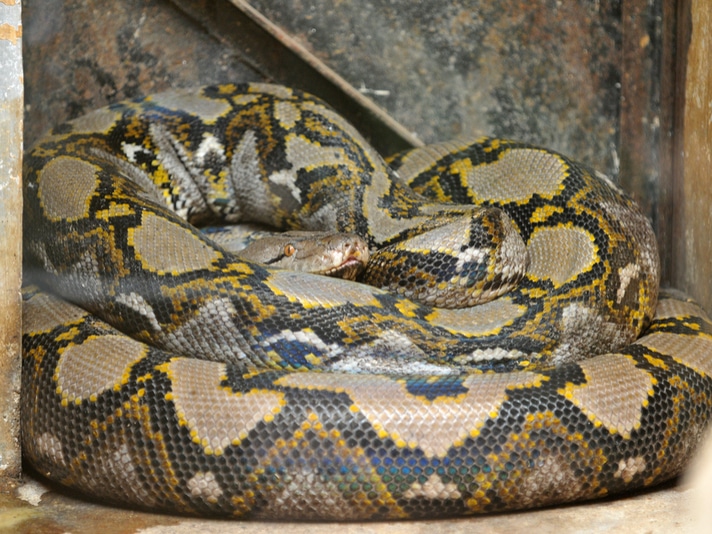The reticulated python is the longest snake species in the world.
The reticulated python is considered the world’s longest snake and one of the three heaviest snakes. It is found throughout much of Southeast and South Asia, including Indonesia, the Philippines, India, and Borneo. The snake is popular with expert reptilekeepers, though prior to captive breeding efforts over the last 30 plus years in the United States, the species was considered hard to handle due to its ill temperament.

Shahrul Azman/Shutterstock
The reticulated python is the longest snake species in the world.
There are retics called dwarfs (10 to 12 feet) and super dwarfs (6 to 8 feet), that are found on islands northwest of Australia. These have been widely captive-bred in a full palette of colors that don’t attain the huge sizes of their mainland cousins.
There are also now two documented cases of the reticulated python consuming humans. Both occurred in Indonesia, one in March 2017, and one in June 2018. Both snakes were 23 feet in length and were killed, revealing the bodies inside.
Here are five interesting facts about this massive snake:
- There are three subspecies: Python reticulatus reticulatus, P. r. jampeanus, and P. r. saputrai. The latter are dwarfs from Tanahjampea and Selayar Island in the Selayar Archipelago.
- The longest reticulated python was 32 feet in length and weighed 350 pounds.
- The natural diet of small reticulated pythons are mainly rodents, while the larger mainland retics feed on pigs, civets, bearcats and even primates.
- The main predator of the reticulated python is the king cobra (Ophiophagus hannah), which is found in many of the same localities as the reticulated python.
- While it became illegal to possess and transport the reticulated python in the United States in 2015, the ban was lifted in 2017 thanks to grammar written in the Lacey Act more than 50 years ago. The clause written in the act, “states that the Interior Department can prohibit the transportation of injurious species "between the continental United States, the District of Columbia, Hawaii, the Commonwealth of Puerto Rico, or any possession of the United States,” were used in 2015 by the U.S. Interior Department to ban the transportation of these large constricting snakes. However, the United States Association of Reptile Keepers (USARK) challenged the wording of the Lacey Act, saying that it only prohibits the transportation of injurious species between the continental United States, the District of Columbia, Hawaii, the Commonwealth of Puerto Rico, or any possession of the United States, and not between INDIVIDUAL states.
See Grammar Matters As 3 Judge Panel Lifts Python Ban



